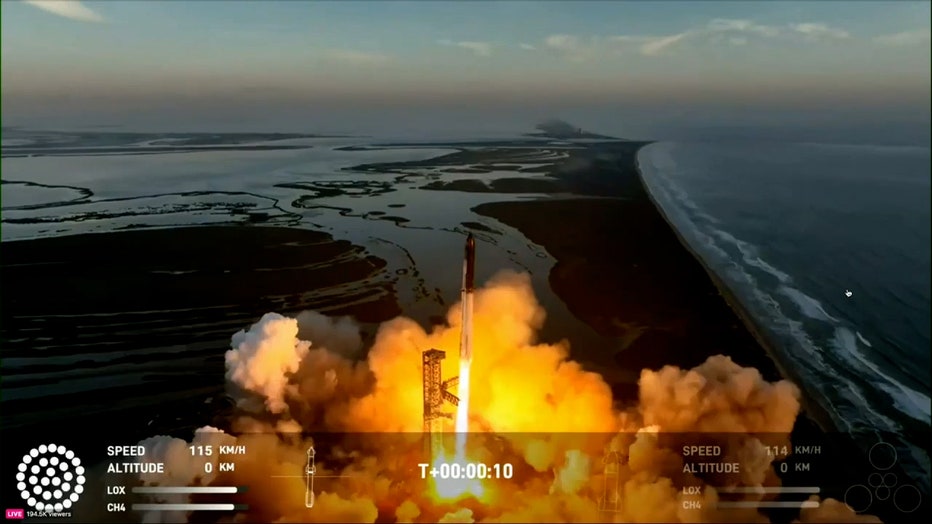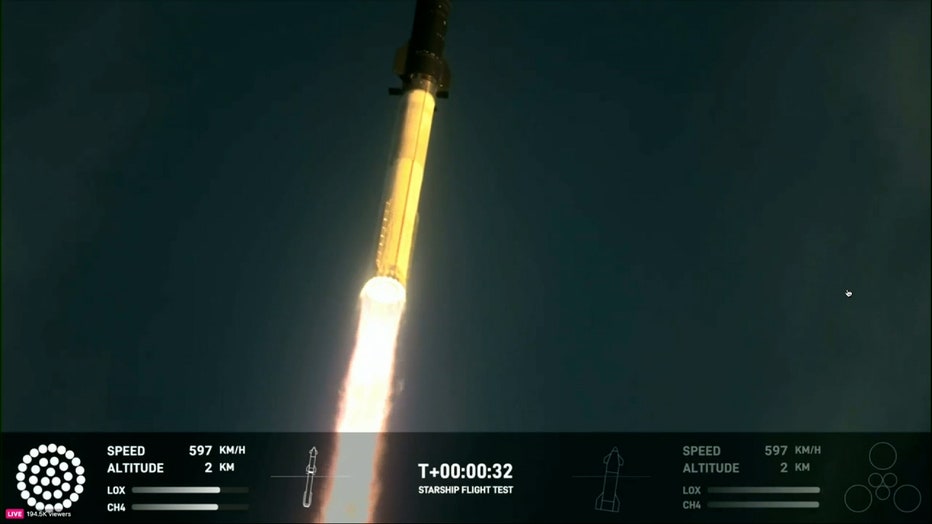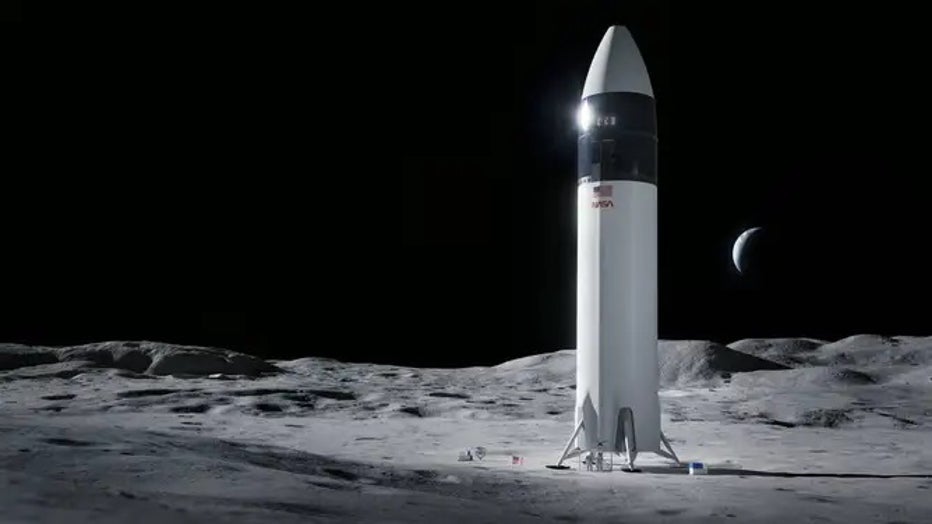Starship launch: SpaceX rocket reaches edge of space before premature explosion
SpaceX tries again to launch Starship rocket
The booster sent the mega rocket toward space, but communication was lost eight minutes after liftoff and SpaceX declared that the vehicle had failed.
BOCA CHICA, Texas - SpaceX delivered on its promise of excitement when it launched the Starship spaceship from South Texas on Saturday.
The 400-foot-tall launch system, including Starship and the Super Heavy booster, rumbled and roared to life from the launch tower in Boca Chica, Texas. The booster's 33 Raptor engines provided the thrust to carry the massive space launch system over the Gulf of Mexico.
Spectators hoping to witness history gathered along the beaches of South Padre Island ahead of SpaceX's second attempt to reach orbit with Starship.

SpaceX Starship second launch attempt (SpaceX)
If the test flight went as planned, SpaceX said Starship would launch from Texas and fly around the Earth, landing in the Pacific Ocean off the coast of Hawaii about 1.5 hours after liftoff.
After Starship's successful takeoff, the separation from the Super Heavy booster ended in an explosion shortly after the separation. Starship also passed the Karman line, the internationally recognized boundary of space, before being lost.
Starship was 91 miles above Earth when its automated termination system triggered the self-destruct of the spaceship, according to SpaceX's webcast.
Despite the loss of both the booster and Starship, SpaceX achieved a major milestone on Saturday with their spacecraft's successful launch and reaching orbit.
SpaceX's goals for this second test flight included testing a new hot-stage separation system and several other upgrades to Starship, the launch tower and the launchpad system, including a water-cooled steel flame deflector.
"This rapid iterative development approach has been the basis for all of SpaceX’s major innovative advancements, including Falcon, Dragon, and Starlink," the company said ahead of the test flight. "Recursive improvement is essential as we work to build a fully reusable transportation system capable of carrying both crew and cargo to Earth orbit, help humanity return to the Moon, and ultimately travel to Mars and beyond."
A test flight in April ended with an epic explosion 24 miles over the Gulf of Mexico when SpaceX launched Starship for the first time. Previous test "hops" were completed in Texas – some also explosive – before SpaceX tried to launch the spaceship and booster together.

SpaceX Starship's second launch attempt (SpaceX)
The company has not announced the official distance or height of the second test flight yet.
What's next for Starship?

Artist’s rendering of SpaceX Starship human lander design. (Image credits: SpaceX) (SpaceX)
Eventually, Starship and Super Heavy will launch from NASA's Kennedy Space Center. Musk said the spaceship is designed to be "caught" by the launch tower arms, making a controlled landing at the same location where it launched.
SPACEX MAKES CHANGES TO STARSHIP AFTER ‘LESSONS LEARNED' FROM TEST FLIGHT
NASA has tapped SpaceX's Starship flight system to land the Artemis astronauts on the Moon in 2025, but many test flights are needed before Starship flies people or payloads.
SpaceX engineers will go over all the data from this second test flight, make additional changes and then do it all over again – and again.
Private citizens also have signed up for flights on Starship, including businessman Jared Isaacman's Polaris Program.
Japanese billionaire Yusaku Maezawa plans to bring eight individuals with him on a Starship flight around the Moon.
LINK: Get updates and more on this story at foxweather.com.

